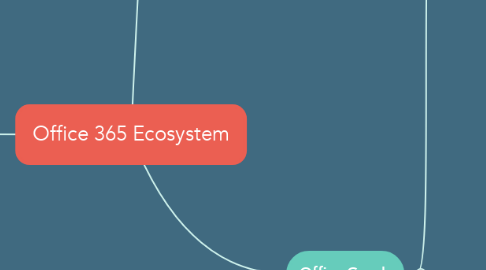
1. SharePoint Online
1.1. Formal Information
1.2. Information Management
1.2.1. Columns
1.2.1.1. Taxonomy
1.2.1.1.1. Managed Metadata
1.2.2. Content
1.2.2.1. Stored Documents
1.2.3. Attributes
1.2.4. Search
1.2.5. Filters
1.3. Portals
1.4. Relational Database
1.4.1. Keys
2. Exchange Online
2.1. Microsoft Teams
2.1.1. Nonverbal Communication
2.1.1.1. Informal Information
2.1.1.1.1. Share Knowledge
2.1.1.1.2. Add Noise
2.1.1.2. Conversation/Chat
2.1.1.2.1. Logs
2.1.1.2.2. Psychological Safety
2.1.1.2.3. Public/Direct Messages
2.1.1.2.4. Context
2.1.1.2.5. Tacit
2.1.1.2.6. Scopes
2.1.2. Telecommunication
2.1.2.1. Audio/Video
2.1.3. Service Integration
2.2. Emails, attachments
3. Office Graph
3.1. Graph Structure
3.1.1. Ontology
3.1.1.1. 形式性、推論可能性
3.1.1.2. 全体性
3.1.1.3. 網羅性
3.1.1.4. 体系性
3.1.1.5. 合意可能性
3.1.1.6. 「人口システムを構築する際のビルディングブロックとして用いられる基本概念/語彙の体系(溝口)」
3.1.1.7. Web Ontology Language/RDF Schema
3.1.1.7.1. RDF
3.1.1.8. 介護オントロジー
3.1.1.8.1. CHARM (Convincing Human Action Rationalized Model)
3.1.2. Social Graph
3.1.2.1. Relationships
3.1.2.1.1. Organizational Structure
3.1.2.1.2. Sender/Receiver
3.1.2.1.3. People
3.1.2.2. Explicit
3.1.3. Knowledge Graph
3.1.3.1. Linked Open Data
3.1.3.2. DBpedia
3.1.3.3. Google Knowledge Graph (2012)
3.1.3.4. Cyc
3.1.3.5. Wikidata
3.1.3.6. Freebase
3.1.3.7. YAGO
3.1.3.8. A trade-off between coverage and correctness
3.1.3.9. Semantic Web
3.1.4. mapping
3.2. Graph Database
3.2.1. Cosmos DB
3.2.1.1. JSON
3.2.1.2. NoSQL
3.2.1.3. Gremlin API
3.2.1.4. Document Database
3.2.2. Neo4j
3.3. Curation
3.3.1. Break Silos
3.3.1.1. NOT
3.3.1.1.1. Domain-Spcific/Domain-Independent
3.3.1.2. Knowledge Management (KM)
3.3.1.2.1. How information and knowledge "grow, flow, and create value" throughout an organization (Agrwal and Islam, 2015)
3.3.1.2.2. Knowledge is not a 'thing,' or a system, but an ephemeral active process of relating. (Stacy 2001)
3.3.1.2.3. Expert System
3.3.1.2.4. SECI モデル(共同化(Socialization)、表出化(Externalization)、連結化(Combination)、内面化(Internalization))、野中
3.3.2. Highlighting what matters most
3.3.3. Insights
3.3.4. Personalized/Grouped
3.4. Office Delve
3.4.1. NextGen Portals
3.4.1.1. Stored documents (content) on SharePoint Online, OneDrive for Business, Exchange Online, Yammer, and Teams
3.4.2. Blog
3.4.2.1. Share Knowledge
3.4.2.1.1. We can always know more than we can tell, and we will always tell more than we can write down. (Snowden, 2000)
3.5. Tags
3.5.1. Folksonomy
3.6. Search
3.6.1. Public
3.6.1.1. Security
3.6.2. Private
3.6.3. "Strings" to "Things"
3.7. Artificial Intelligence
3.7.1. Connected Data
3.7.2. Infer Meaning
3.7.3. Understand Concepts
3.7.4. エキスパートの存在の仕方は人工知能では再現できない。人工知能が再現できるのは第三段階までで、表象主義的な教育で養成できる技能も第三段階まで(Dreyfus, 2002)
3.8. Machine Learning
3.8.1. Collaborative Filtering
3.8.2. Content-based Filtering
